We have to do a bit of time travel for this one, minus the Delorean and the good doctor. The date? November 30, 1978 to be exact. That’s when the first batch of Nike’ Air Tailwinds were shipped for the Honululu marathon. It was a scheme of grand audacity back then, to put an air bag inside a running shoe, an idea brought about by Frank Rudy and Bob Bogert – both of them ex-aerospace engineers.[1] The original Tailwind was based on the Nike LDV and ended up being a failure; not because of the air bags, but due to upper tear caused by the wrong choice of mesh paint. The years that followed had divided camps within Nike – groups for and against pushing forward Air as a technology.
Nike Air continued to be encased in midsole foam (including Air Jordans) until March 26th, 1987, which marked the birth of Nike’s first visible Air shoe, the Air Max 1987. Wieden and Kennedy, Nike’s advertising agency, promoted the new shoe with a novel TV commercial using Beatle’s ‘revolution’ song. The new visible Air shoe was a huge commercial success, and the later years saw newer versions of Max Air – the AM’90, blow-molded AM’180, the ’93 and so on. Though we’re not exactly thoroughbred retro-sneakerheads, we rank the grey and green Air Max ’95 as one of our all time Max Air favourites. Heavy and bulky, but there was something about that shoe…

2006 saw the launch of Nike’s first all air (mostly) without a foam midsole. Wasn’t without teething issues though.
Nike Air technology was featured in its first full length glory in the form of Air Max ’97, where a heel-to-toe air bag lay between a polyurethane foam midsole and rubber outsole. Nine years later, the 2006 Air Max 360 made its debut in the internet age, the ultimate expression of a foamless blow-molded vision. The shoe featured a Max Air bag bereft of any foam; the see-through Air bag was caged in a hard Pebax skeleton, replete with an eye-catching upper showcasing laser-cut perforations. But once the pomp and show was over, the original see-through wonder came with some early teething problems – the soft skin between the rubber lugs made it prone to punctures, and sometimes the hard Pebax cage gradually wore out the visible Air sidewalls. I remember running through at least two Air bag failures on the AM360, both caused by getting on and off aircrafts. Sounds weird, but true story it certainly is.
Agreed, the original Air Max 360 looked like nothing else in the market and concept still does hold its own when it comes to visual differentiation. But that said, runners are divided on how good these shoes really are. If this book is anything to go by, Nike co-founder Bill Bowerman was asked what he thought of Max Air during the original AM’87 launch – and whether it was an innovation or a gimmick. “More of a gimmick,” Bowerman said.[1]
If the sales trends are anything to go by, the 360 Air bag design has found more favour with sneaker-heads than the serious running community. A bit of the shoe’s fault too. The Air Max looks aesthetically delicious, coupled with a high sticker price which guarantees a certain level of exclusivity – both crucial ingredients to push up a shoe’s appeal as a lifestyle product. But once you cut through the layers of marketing glorification, how does the shoe perform when put to running duties? We’re going to pitch perception against reality and tell you like it is. The common perception about the Air Max is that it isn’t a ’serious running shoe’. And the reality? Read on.
The reality depends on your version of serious running. If that means regularily running 6 minute miles over an average distance of 10k, the Air Max 2014 will do a lesser job than many cheaper alternatives. But if your goal is to buy a shoe for leisurely 9 minute mile recovery runs, the Air Max is not a bad shoe at all, provided you’re brave enough to drop $180 on a pair. A lot of runners we talk to think of the Air Max as a footwear equivalent of Bronc riding , with terrifying visions of their foot being tossed around on the bouncy Air bag. We’d like to dispel that perception, because the Air Max 2014 behaves fairly well as a running shoe, despite a few of its unmissable shortcomings.
A lot has changed since the original Air Max 360 graced the home pages of sneakerblogs back in 2006. The irony was that a shoe resting on a full length air bag felt very stiff while running; the forefoot required hulk like brute force to bend, and the Pebax cage restricted the natural compression of the blow molded air bag. Add to that agonies of Air bag failure and Pebax sidewall cracks, so the urgency of design improvement was paramount. The Air Max 2010 was the first to feature a Cushlon midsole layer between the upper and the Air bag, and also get rid of the Pebax cage. Two more years saw the same outsole being carried over, with a new design change in 2013. The new 2k13 construction focused on remedying what had long been a bugbear – flexibility. The fragility of a typical full Max Air bag did not allow for scattered placement of rubber pieces – it needed to be a single sheet of rubber which could protect the urethane film holding pressurised air. This naturally meant compromising on flex grooves, and resultantly the forefoot always rode out quite stiff.
With that background, the Air Max 2013 was a vast improvement over earlier versions. The new sole design had deep grooves built in the forefoot, massively increasing flexibility. The upper was a work of art too – Hyperfuse panels with tastefully executed molding details, Flywire lacing and ritzy mesh and foam packages all around. And throw in an inner sleeve which wrapped the foot in a cocoon of superior materials and fit. The bright red colorway simply looked unquestionably amazing if you had the verve to carry it off.
In an unexpected twist, the Air Max 2014 gets a brand new rubber outsole. Surprising, because the last change came in form of the Air Max 2013 sole unit, which was overhauled after three long years. In the 2014 version, the Air bag and the cushion midsole are carry overs, but comes shod with brand new rubber. Compare it with the 2013 version, and fundamentally not much has changed – the deep grooves which saw the light of day in 2013 still helps the Air Max with increased flexibility.
The 2014 upper is completely revamped, both from a construction and material standpoint. In a visible contrast to Air Max 2013, the 2014 version uses upper materials which are more layered, and treads a thin line between stiffness and support. The 2013 model used a Hyperfuse layered open mesh on its upper backed by a lining mesh which formed the inner sleeve. The latter, when combined with mid-foot Flywire lacing translated into one very well fitting shoe. On the other hand, the Air Max 2014 takes a multi-layered approach to building the upper, with no-sew panels snaking around the periphery. Nike uses a novel way of layering materials on the AM’14 – a see through mesh is fused on perforated foam panels starting from the mid-foot. This increases the thickness of the upper, and also hems in the forefoot slightly. Runners moving up from the Air Max 2013 will discover that the new shoe will feel narrower, and the materials take a few runs to break-in. The upper is not as pliable as the 2013 A-Max.
It really befuddles us that Nike chose to remove the inner sleeve on the Air Max 2014. It is almost if Nike’s strategy is to strip something nice off a shoe, and then come back the next year with an ‘improved’ version which puts it back on the shoe. An inner sleeve is never an inconvenience, tongue slide is. Without the sleeve, the Air Max 2014’s tongue slides to one side, and the situation is helped neither by the lace loop or the strange looking blister-like urethane pods on the tongue top. We not happy about this change, and we hope Nike ‘betters’ the 2015 Air Max by plugging the sleeve back in.
The removal of the inner sleeve and the Flywire, combined with all new materials makes the Air Max 2014 feel looser in the mid foot area. On the plus side, the absence of Flywire gives the mid foot sidewalls a smooth texture without bringing on the localised lacing pressure caused by the tugs of Flywire strings. The fabric surrounding the ankle area is switched to a smoother type, though we felt that the mesh used in the AM2013 was more plush. The collar walls are low, so this might result in a sensation of looseness around the ankle for some runners, and could restrict the use of drop-in orthotics.
The sockliner is changed from last year’s Fitsole 2 (also found in the Pegasus 30) to a thicker foam insole which has ‘Running’ written in mega-caps across its length. It feels more cushioned than the Fitsole 2, and noticeably so in the forefoot. The front feels much more padded and that is large part to the insole being squished underfoot. Anatomically, the Fitsole 2 and the new neutral running insole are similar – contoured edges, with molded under-arch area.
The Nike+ cavity is gone with the AM2014, so you can’t use the drop-in transmitter anymore. Funny thing is, the midsole is a carry over from the Air Max 2013 which was Nike+ enabled, so if you look closely at the picture above, you’ll see an impression where the hole used to be. Flip the shoe, and the plastic oval has the ‘+’ sign removed, leaving just the Swoosh logo on it. We couldn’t help but notice the tacky fixing of the plastic logo. Seems like it was a design afterthought, and the end product looks unworthy of a fixture on a $180 shoe.
Reflectivity on the Air Max 2014 is pretty awesome. The swooshes on both sides are abundantly reflective, and shine like pointy beacons in the dark. The rear of the shoe has ‘Air Max’ typed out in shiny font, so during darkness there’s no mistaking what shoe you’re running in. Makes us wonder if carmakers could learn a thing or two from the athletic footwear industry. To show you how the Air Max 2014 scores in nighttime visibility, we’ve got a few neat pictures to show you. And yes, you’re welcome.
Earlier in the review, we said that the Air Max 2014 was supportive, and we’d like to lay down some more details to second that comment. The pressurized air bag is only a part of the Air Max 2014’s underpinnings; bulk of the reinforcement comes from multiple pillars inside it. The columns running the length of the sole and helps transition the foot during runs. The pillars are firmer than you’d imagine. Remember the 2007 Nike Reax Run shoe? That model featured urethane film coated pillars which were basically Air Max columns minus the Air. And as far as we can remember, those shoes did a nifty support job during runs.
The ride on the Air Max 2014 is relatively on the firm side – naturally, there’s tons of cushioning coming from compression of the Max Air bag, but we’d describe its character as elastic, instead of being soft, plush or responsive.
The Air Max 2014 also has a thick internal column beneath the mid foot which was originally designed for the Nike Plus cavity, so that also adds bolstering. Surely, there is noticeable compression and splaying of the Max Air bag during rear foot landings, but never did we get a sense of instability. We’d also like to underscore the fact that the shoe is very heavy. We measured it at 414 grams/14.6 ounces for a half pair of US 11, which is weighty as they come.
The outsole design this year has a higher number of waffle shaped lugs, so grip level is decent. Heel to toe transition is not the best in the Air Max 2014, given that the outsole is quite stiff and unyielding, with a large gap underneath mid-foot. Flexibility is equal to the AM 2013, and vastly improved when compared to pre-2013 model. When compared to foam based running shoes, the forefoot is around twice as stiff if the force required to bend the shoes is anything to go by.
How would we sum up the Air Max 2014? It is certainly not the best running shoe out there, and not at a price nudging $200. It does however, deliver a cushioned yet supportive ride experience which belies its unique appearance. Should work for a good majority of neutral runners, if they can live with the downsides on weight, forefoot flexibility and the astronomical price tag.
[1]: Swoosh: The unauthorized story of Nike and the men who played there. ISBN-13: 978-0887306228, Harper business books.
(Disclaimer: Solereview.com paid full US retail price for the shoe reviewed) The new Air Max 2015 review has been published here. You can also visit the review via the image link.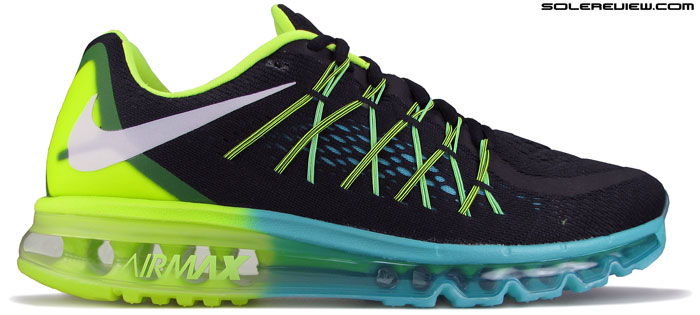


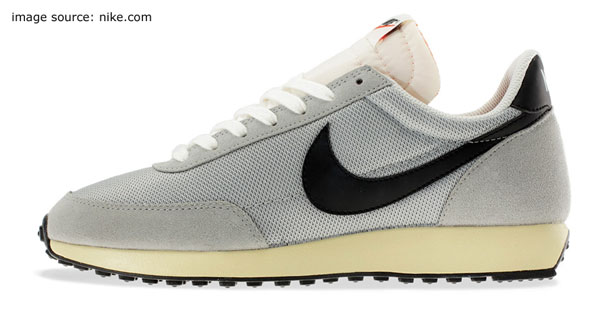










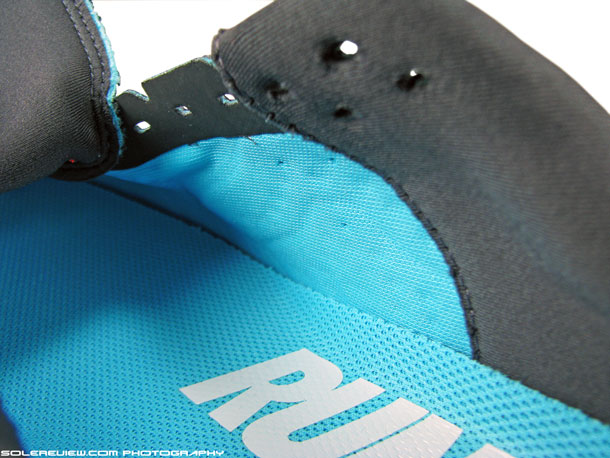
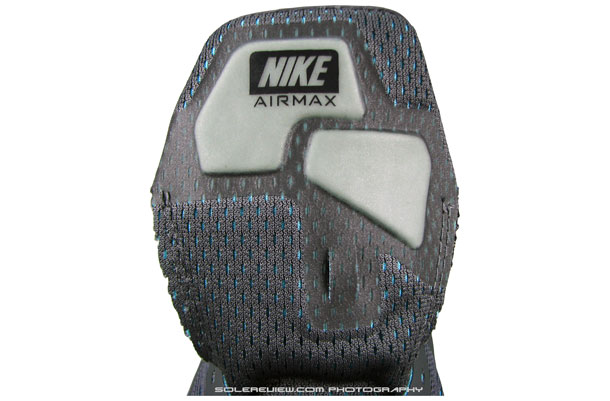

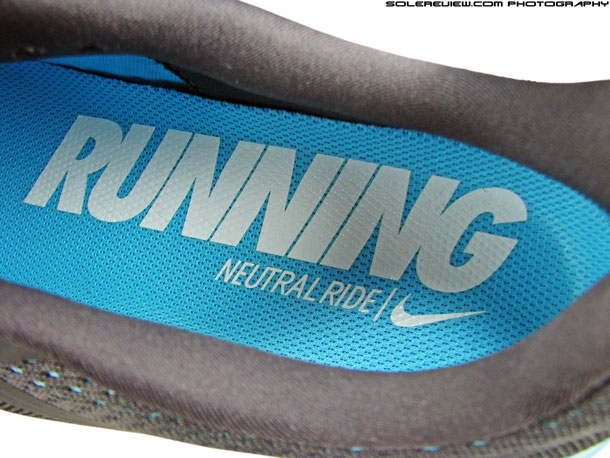

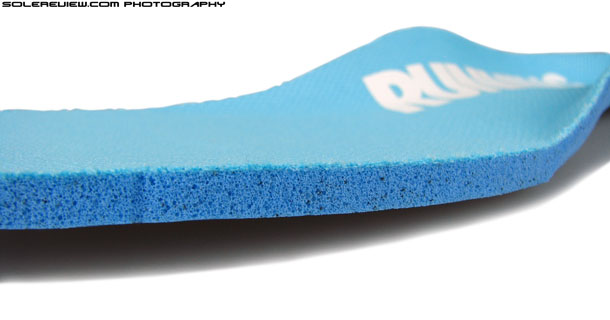

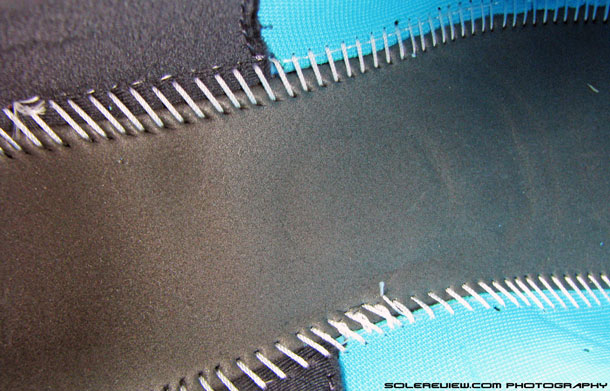
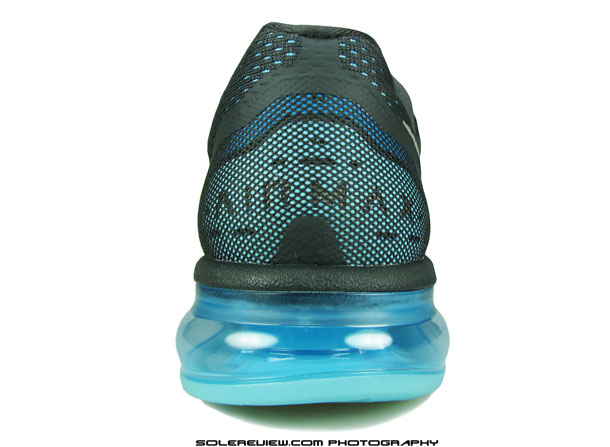


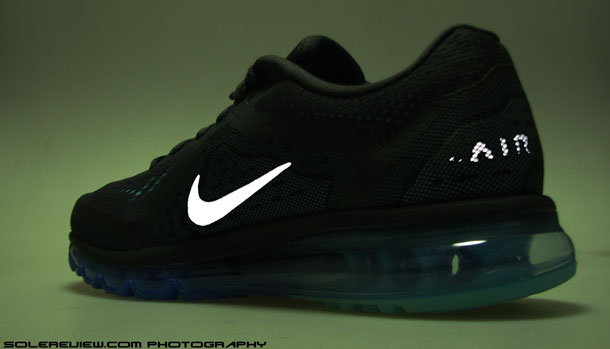


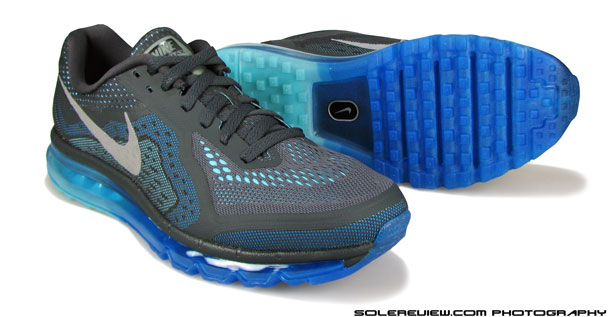
68 comments
If we had to pick one adjective, that would be firm. We’re sorry if that wasn’t clear enough in the review, we’ll update it.
Thanks for replying! That cleared things up.
I need a pair of shoes for work use. I’m a doctor and walk on my feet all day in the hospital. I also tend to put a lot of weight on the front part of my feet in the distal metatarsal area. I’m also a bit heavier (200 lbs) and have slightly low arches. What shoe would you recommend for this purpose?
Can you please describe the type of flooring you walk on?
It’s mostly linoleum/vinyl type of flooring. I don’t need a non-marking sole, etc. but I’m thinking I just need a ton of cushioning, especially forefoot, so thats why I was looking at the Air Max 14’s.
We won’t recommend the Air Max 2014 then. Its firm ride belies its appearance, and we think you’re better off with something like an Asics Gel Nimbus 16 (15 will do too). Plush underfoot(front and rear) with an upper to match. Suggest you try them out together at a store and then take a call.
Since you’re only using them for walking, a quick 10 minutes in both the shoes (on the store floor) should give you a good read.
Thanks for the response. I want to commend you on the excellent site and informative reviews. I would like to also suggest an “FAQ” section for shoe related comments. I’m not sure if that’s in the scope of your goals with the site, but I think it would help people understand what’s important to their mechanics and find the appropriate qualities in the shoes that you review. I have seen some of these ‘tips’ on other websites, but if your reviews are an indication of your attention to detail– then I think your readers would be served well by this information, hopefully evidence based and not merely anecdotal.
Some of the questions I had for you–
1. When people have low arches or flat feet, do they need more cushioning/neutral shoe or more arch support/stability shoe? I’m trying to understand if runners with high arches need the arch support (because of space between arch and shoe) vs. runners with lower arches (because of increased support to lift the arch up and improve mechanics)? It seems like either point can be argued, I just wanted to see if you had any insight on this.
2. Is the arch height issue overblown? Should the neutral vs. motion control decision just be based on heel strike and running mechanics?
3. Do heavier runners collapse their arches due to the increased load, and therefore benefit from motion control shoes for the most part?
4. Is there a shoe that provides a ton of cushioning AND arch support? It seems like the opposite of support is cushioning.
You’re welcome. Thank you for the suggestion in regards to the FAQ section, agree that is a need. That feature is part of our content roll-out plan, it is just that we’re waiting to finish writing more reviews across multiple brands. With that, we’ll have enough ammo to fill the FAQ and glossary section, which will, by that time be contextual to our reviews.
Happy to answer your questions, but given the nature of the topic, the responses (Q1 – Q3) will be open to debate. Our replies are based off our experiences – both as ex-footwear industry professionals and shoe reviewers:
1. Low arched/flat footed runners need more medial support. More specifically, coming from two sources – immediate arch support coming from inside the upper (just underfoot) and the sole. Because we consider artificial arch support useful from a tensile loading mechanism standpoint – something a naturally curved arch should be doing otherwise. It is also important that the shoe should not twist longitudinally during the gait cycle. Arch support also keeps the non-skeletal foot systems from getting over-stretched.
2. While there is some truth to the theory (as explained above), the whole issue is oversimplified and generalized. This is a 80’s legacy, when footwear brands blindly followed preliminary biomechanical studies, mostly based on hypothetical and/or preliminary findings. You also have to consider the fact that running shoes back then were just pieces of fabrics stuck to a block of foams. Footwear technology, being what it is back then, had less durable materials degrading quickly over use. A few decades, it was common to see runners wearing shoes which leaned dangerously to one side, as the foam ONLY on the medial side compressed over time. You don’t see that anymore. Modern foams are much more resistant to structural change, and in essence most shoes are supportive enough to begin with.
As you pointed out, running form and conditioning your ligaments, tendons and muscles counts for a lot more than the choice of running shoes.
3. We don’t see any benefit for heavier runners when it comes to motion control shoes – assuming we talking about footwear with arch support. Arches are supposed to collapse, and the elastic nature of the ligament helps it spring back. Now if we throw in artificial arch support into the picture, it might actually hamper the arch’s natural range of motion. This might sound contradictory to point 1, but there the arch was flat to begin with.
4. The Brooks Transcend is a great mix of the two characteristics you mentioned.
I feel that my Airmax 2011 fair better in terms of cushioning compared to Airmax 2014. Airmax 2014 is just too firm comparatively, is that just my own experience?
Hmm… can’t recollect how that shoe felt, but it could be because of a softer midsole layer above the Air bag.
Probably then. Am kinda dissapointed after getting this Airmax 2014 at hefty $180. And worse part, the side engineering mesh torn after less than 100km. Living outside of US so returning isnt an option for me…
That is a bummer. Was it bought there, and wouldn’t your local importer change them in that case? They usually do.
No.. Bought that during my short trip to the States so my local rep couldnt do much. What a pity.. Thanks anyway!
How much weight can this shoe support
I’m a defensive line men so naturally ima big dude anyways I weigh about 280 and was wondering if buying this shoe would be a good idea
Good question, and we’re afraid we don’t have an answer on how much weight the shoe can take.
It might just be safe to stick to something like the Asics Nimbus 15 or a Brooks Adrenaline GTS 14.
Hey, i wanted a shoe for various workouts, running (my runs are all about 5-8 kms in about 25-35 mins), gym, walking, and genral exercises .. Do you recommand the new nike air max?
The Air Max 2014 is too stiff, and not to mention expensive. Give something like the Pegasus 31 a try, which is a better choice for the things you’ve mentioned.
Hey, I wanted to understand if I should choose between the Air Max or the Lunarglide 6.Could you help suggest which should go in for ?
My work of line is mostly into sporting events and there’s not a lot of running involved but yes, we do walk a lot. The platforms where we work on is mostly grass, tar roads and concrete floors. We also have a desk job role before the event where at that time there’s not a lot walking to do.
Apart from my work schedule, I do run on a regular basic of 3 – 5 km a day.
Could you please tell me if the Air max or the Lunarglide would be a better choice.
I did own a pair of Nike Air Max 180.
As far as multiple surface use is concerned, the LG6 is a better choice.
Thank you for the suggestion.
Gonna place the order. Have a good day !!!
You’re welcome. It will be great if you can share your ownership experience on our Lunarglide 6 page after you’ve spent some time in the shoes! It will help us, and other people too.
hi, would the nike air max thea and nike free runs be good for running? cause i bought both
You could run in the Free’s – the Max Theas are lifestyle/casual oriented shoes.
hi, would the roshe runs be suitable for running?
Haven’t run in them, but those are lifestyle shoes and not ideal for running in.
hey i ordered a pair of those shoes . I want to know tht i need a pair of shoes for max 2 hour running , playing some sports like basketball n rest for roaming around in those . IS air max 2014 will do this in a grt way ??
Basketball? No sir.
Running and roaming around these will do ok.
Basketball like twice in week for an hour ??
We said that because stability will be terrible on those while playing ball. The final call is yours though.
Hi, I will greatly appreciate if you could dispel or confirm my recent brief research on finding the right show for running. I had bought one shoe from a well known company for running and when I did few runs for about 3 km, I felt some pain in my feet as the shoe sole was stiff. Thereafter, I also bought Air Max 2014 Nike runner and I went for a run today and yesterday and I felt a bit pain above ankles and back. (1)I have read few reviews which state that cushion shoes could be bad for running. (2) I am not sure if the pain that i suffered was because these shoes and whether the pain will not occur after I become used to this show or (3) I can change this show to less cushioned shoe as I run about 3 k five times a day. I will appreciate if could get back early due to urgency involved!
Can’t really say with certainty. Shoes behave in different ways for runners, so while cushioned shoes work beautifully for some people, it could be torture. The best recourse is to experiment till you find the right shoe.
Also, are you running 3k x 5 every single day? Trust you have also weaved in an exercise, stretching and recovery regime into your routine too.
Many thanks for the advice. I am sorry that I had written the above query in a hurry hence some mistakes therein. I meant to say I run about 3 k every day 5 times a week. I have spoken with the Nike outlet here and they have actually said I could exchange this shoe for an other one. I find this shoe a bit bulky as well and this shoe does not motivate me as such. Knowing the above, I would appreciate if you could recommend which shoes I should go for! Many thanks again for your help
You could try the Nike Pegasus 31 and the Lunarglide 6. Two different shoes, but comes with their own set of characteristics. Whether they suit you or not depends on your personal preference.
Hi, I am a serious runner (50-60 miles a week, all year round), and I was wondering if these can be used as hardcore running shoes or are they just “running shoes” meant to walk around and look good in?
More of a casual intent. These are very average running shoes, and so are the AM 2015’s. Not worth top dollar.
Hi i am a serious runner (50km a week) and i am chooceng between air max and adidas supernova glide 6
Easy – the Supernova Glide 6 or 7.
Hello, would the shoes protect enough during wet weather (walking), I was thinking to buy Air Max 2015 to use for travelling and extensive walking, but I am afraid those are even more “only for a dry summer” than AM 2014. In particular if the temperature falls to 5-10 C’, can one survive with AM 2014?
Not for damp weather, the upper will let moisture in quickly – on both Air Max 2014 and 15. Instead, try a shoe like the Pegasus 31 flash – water resistant and warmer.
Super, many thanks!!
i am now working out for full marathon. which one better, air max 2014/2015 or Asics gel kayano 21?
thanks
Between the two shoes, Kayano 21 is better.
I m over 240 lbs will this shoe be comfortable for jogging and walking 6 miles a day?
We think the Brooks Beast 14 (in wide) and Asics Gel Cumulus 16 to be better choices than Air Max 2014 or 15.
are the air max 2014 good for casual’s and for little running and roaming too …??
Yes, no problems doing that!
Hold the Air Max bag with your index finger and thumb and press. If it feels tight and pressurized, then all is good. If it feels loose, then the bag has deflated and you need to return it.
Hi, I have recently purchased a pair of Airmax 2014 which I’ve used in less than a month.
I’ve actually notice that the insole marking “RUNNING , NEUTRAL RIDE” is peeling-off, is this normal?
Here’s the actual picture.. kindly advice.. thanks..
That’s a bit too soon – just after three times. But they eventually come off, sooner or later.
Return it if it bothers you, though.
Thanks for the tip.. At-least now I know that this happens normally, just so happens that its a bit too soon for me.. :) Thanks anyway, more power!
You must have really smelly feet
Hi, So I recently bought these shoes and I am trying to lose weight thorugh running with them each each (ahout 25 miles) and had nike free runs before. The problem is that these shoes makes my shins and calf burn when jogging? Is this normal. In addition, I ordered a size larger than I am, however they fit good. Is this because I’m growing muscles in my legs through the shoes?
It might just be your body getting used to the exercise – shoes aren’t so much of a factor as physical conditioning/strength is. If you’re not already doing so, start including exercises along with your run. Perhaps a coach or physio can help you.
Reviewers.. Do you think airmax tailwind 7 is a running shoe? Lol.. My dad just bought it today and if this is a running shoe and how good or bad it is xD..i thank you..btw its his shoe
It is a running shoe, alright. Haven’t tested it, but from the looks of it, the Tailwind should run soft – good for comfort/recovery runs.
Yeah thank you..i just having doubts about the design comparing to other shoe like pegasus 30 31 which im using.. But yeah it is a running shoe just want to confirm it from expert :D
Between both shoes, the Pegasus is a far better choice as a running shoe.
i love my nike air torch 4 (wearing out) and in need of a new shoe…. the orthapedic said i need to stick to a shoe with a ‘firmer’ sole and arch support to reduce bunion pain …. i am not a fan of arch support inserts so would like a shoe that has somewhat of one. I was looking at the tailwind 7 and the lunarglide 6 or even one of the nike air max 2014 style??? suggestions?
We’d choose the LG6 out of the three. Has support, but isn’t overtly firm.
How durable are those shoes? I bought a pair of them really cheap from an nike outlet (45€). I find them pretty confortable though I´m somewhat worried about the fact of them popping up. Would there be any problem in jogging around thirty minutes 3/4 days a week with them? And what about playing football over hard surfaces like those made of “soft concrete” (don´t know how to describe it lol)? Thank you in advance.
The Nike Air Max is only as durable as its airbag. That said, no problem running 30 mins x 4 times a week. Playing football? That’s a risk.
Hi, I have plantar fasciitis .is the air max 2014 neutral ride helpful for me?
What did your doctor prescribe with regards to specific shoe qualities?
Hi Friends, After the X-Ray I have a Heel Spur and the Doctor suggested to wear a shoe with a hole in the heel. So I have Plantar Fasciitis with heel spur. Pls suggest me a proper shoe for the heel pain. Regards
Hi Ashu,
there are no running shoe models sold with a hole in the heel. If your doctor has recommended the use of one, it is best to go for a pair of custom-made orthopaedic footwear.
Your doctor should be able to recommend a store/company which provides such products in your area.
Comments are closed.